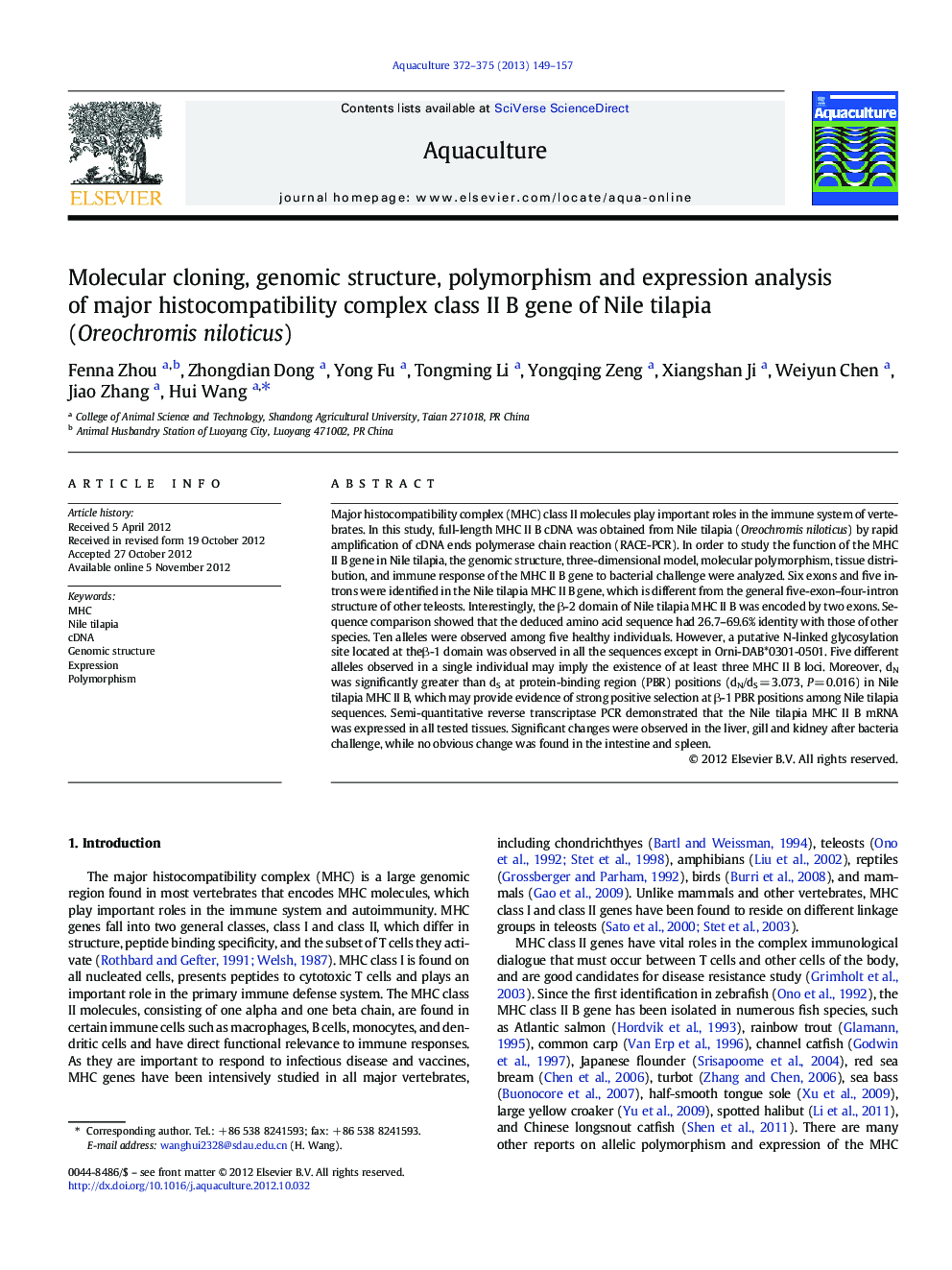| Article ID | Journal | Published Year | Pages | File Type |
|---|---|---|---|---|
| 2422277 | Aquaculture | 2013 | 9 Pages |
Major histocompatibility complex (MHC) class II molecules play important roles in the immune system of vertebrates. In this study, full-length MHC II B cDNA was obtained from Nile tilapia (Oreochromis niloticus) by rapid amplification of cDNA ends polymerase chain reaction (RACE-PCR). In order to study the function of the MHC II B gene in Nile tilapia, the genomic structure, three-dimensional model, molecular polymorphism, tissue distribution, and immune response of the MHC II B gene to bacterial challenge were analyzed. Six exons and five introns were identified in the Nile tilapia MHC II B gene, which is different from the general five-exon–four-intron structure of other teleosts. Interestingly, the β-2 domain of Nile tilapia MHC II B was encoded by two exons. Sequence comparison showed that the deduced amino acid sequence had 26.7–69.6% identity with those of other species. Ten alleles were observed among five healthy individuals. However, a putative N-linked glycosylation site located at theβ-1 domain was observed in all the sequences except in Orni-DAB*0301-0501. Five different alleles observed in a single individual may imply the existence of at least three MHC II B loci. Moreover, dN was significantly greater than dS at protein-binding region (PBR) positions (dN/dS = 3.073, P = 0.016) in Nile tilapia MHC II B, which may provide evidence of strong positive selection at β-1 PBR positions among Nile tilapia sequences. Semi-quantitative reverse transcriptase PCR demonstrated that the Nile tilapia MHC II B mRNA was expressed in all tested tissues. Significant changes were observed in the liver, gill and kidney after bacteria challenge, while no obvious change was found in the intestine and spleen.
► The full-length cDNA was 1143 bp and encoded a protein with 251 amino acid residues. ► The genomic sequence was 2428 bp, containing six exons and five introns. ► Ten alleles were obtained, in which five alleles were observed in a single individual. ► The variability between sequences was higher than that of other fish. ► A N-linked glycosylation site was not observed in Orni-DAB*0301-0501.
